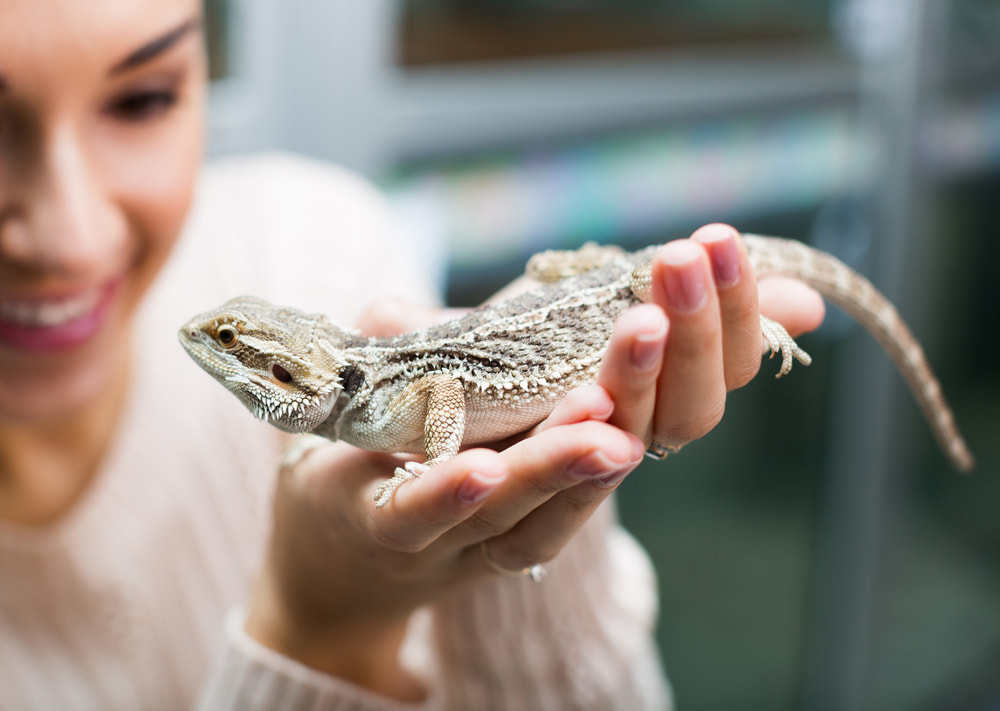
We’re proud to carry a wide variety of reptiles, including several species of lizards. This includes Geckos, Chameleons, Skinks, and other lizards. If you are interested in buying a lizard for a pet, one of the main things you will need to know is how to feed your new roommate. This isn’t quite as simple as saying “What do lizards eat?” For one thing, different species of lizards have a different diet. As well, lizards in the wild often eat differently than pets.
Feeding a lizard is very simple once you learn what they eat and their dietary needs. Let’s do our best to answer this important question for you right now!
Bearded dragons are small-medium sized lizards native to Australia. As a species relatively low on the food chain, Bearded Dragons are omnivores. Babies and juveniles require about 70% insects and protein with 30% greens. When beardies reach adulthood, their dietary needs switch and should ideally get closer to 70% greens and 30% insects. Gut-loaded crickets and dubia roaches are great options. Good staple greens include collard greens, dandelion greens, turnip greens, mustard greens, butternut squash, acorn squash, and even bell peppers.
These lizards are omnivores and do best with a highly varied diet consisting of 40% protein, 50% veggies, and 10% fruit. Beyond gut-loaded crickets, dubias, mealworms, snails, and the occasional superworm, hard-boiled egg, cooked ground turkey, and lean ground beef are great for their diet. Veggies should include calcium-rich leafy greens. Suitable fruits include mango, blueberries, raspberries, and strawberries.
Panthers Chameleons are insectivores, and so a large variety of feeder insects is their prefered diet. Gut-loaded crickets and dubia roaches make good staples. Babies and juveniles should be fed once a day as much as they will eat, and then adults can be fed every other day. For an occasional treat, you can give your Chameleon a few hornworms. In order to truly mimic the nutrients they get in the wild, these feeder insects should be dusted with calcium and multivitamins at least once a week.
Leopard Geckos are strict insectivores, just like their Chameleon cousins. Just the same, gut loaded crickets, dubia roaches, and mealworms make good staple feeders. Pinheads are recommended for babies. These should be offered every day up until about six months of age. Food can be offered every second or third day once your lizard is an adult. Superworms and waxworms make good treats for adult Leopard Geckos. Insects should be dusted with calcium once a day and multivitamins at least once a week.
This is only a short list. If you have additional questions or concerns, our team is here to speak to you about it. You can reach us by calling 781-729-0135 or emailing JabberwockReptiles@gmail.com.
